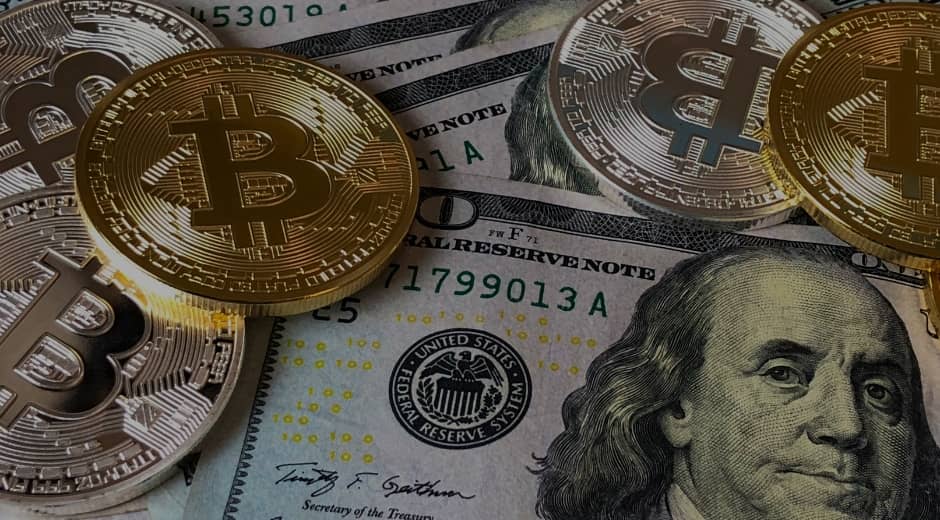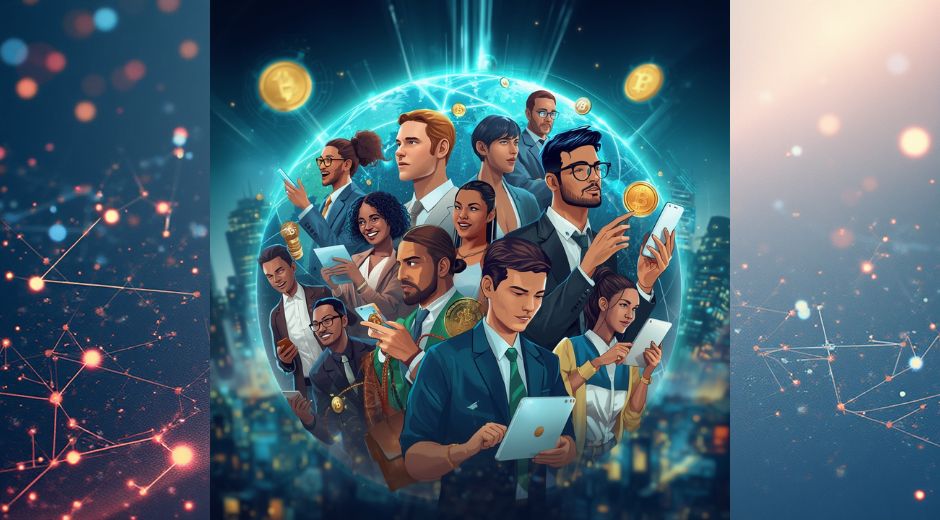Bitcoin + AI: The Next Frontier in Decentralized Intelligence
The convergence of Bitcoin and artificial intelligence (AI) marks one of the most exciting frontiers in modern technology. Both innovations have already reshaped industries individually — Bitcoin has revolutionized finance through decentralization, while AI has transformed data-driven decision-making across every sector.
Now, their fusion promises a new era of decentralized intelligence, where smart algorithms and distributed networks collaborate without centralized control. This evolution could redefine how data, value, and innovation flow across the global digital landscape.
Let’s explore how Bitcoin and AI are merging, the real-world applications driving this revolution, and what the future might hold for decentralized intelligence.
1. The Common Ground Between Bitcoin and AI
At first glance, Bitcoin and AI seem to belong to different technological worlds. Bitcoin operates in the decentralized realm of blockchain, while AI thrives on centralized computation and vast datasets. Yet, they share a fundamental principle — autonomy.
Both aim to minimize human bias and maximize efficiency:
-
Bitcoin automates trust through mathematics and consensus mechanisms.
-
AI automates reasoning, pattern recognition, and decision-making.
Shared Core Values:
-
Autonomy: Operate independently of human oversight.
-
Transparency: Blockchain provides traceability; explainable AI seeks interpretability.
-
Scalability: Both can grow and learn through distributed computation.
-
Data Integrity: Bitcoin’s immutability ensures secure transactions; AI depends on clean, verified data.
This synergy lays the foundation for intelligent decentralized systems that can think, trade, and evolve — without centralized control.
2. AI on the Blockchain: A Revolution in Trust and Transparency
AI systems are often criticized for being opaque or “black boxes.” Blockchain technology offers a solution by providing transparent and verifiable data trails.
How It Works:
When AI models are trained or make predictions, each transaction or decision can be recorded on a blockchain ledger. This ensures accountability — you can trace how a model reached a conclusion and verify that the data wasn’t tampered with.
Benefits of AI + Blockchain Integration:
-
Auditability: Every decision or output can be traced.
-
Data Provenance: Ensures AI models are trained on verified, untampered data.
-
Decentralized AI Marketplaces: Users can share, trade, or sell data securely using tokens.
-
Improved Security: Blockchain prevents malicious manipulation of training data.
This intersection allows AI to operate ethically, securely, and transparently, restoring trust in machine-driven systems.
3. Bitcoin’s Role: The Economic Engine of Decentralized AI
Bitcoin’s global, censorship-resistant infrastructure provides the monetary layer needed for AI’s decentralized future.
How Bitcoin Fuels AI:
-
Microtransactions: Bitcoin’s Lightning Network enables micro-payments, perfect for machine-to-machine transactions.
-
Energy Incentives: AI computation could align with Bitcoin mining to optimize energy use.
-
Tokenized Access: Bitcoin-backed systems could grant AI agents payment capabilities for data access, cloud computing, or API calls.
Imagine an AI model that autonomously buys data, pays for compute time, and learns from transactions — all using Bitcoin. This transforms machines into self-sustaining economic agents capable of managing their own digital existence.
Real-World Example:
Projects like Ocean Protocol and SingularityNET already explore AI data markets on blockchain. Integrating Bitcoin’s stability could supercharge these ecosystems with secure and borderless payments.
4. Decentralized Intelligence: When AI Becomes Autonomous
Traditional AI depends on centralized infrastructure — servers, data centers, and corporate APIs. But decentralized AI changes the game.
Decentralized AI distributes learning and processing across nodes, ensuring no single entity controls the intelligence. Combined with Bitcoin, it becomes economically autonomous.
How It Works:
-
Nodes contribute computational resources for AI processing.
-
Contributors are rewarded in Bitcoin or crypto tokens.
-
Models evolve collaboratively, owned by no single party.
Benefits:
-
No Centralized Control: Prevents monopolies from dominating AI development.
-
Resilient Systems: Decentralized models can’t be easily censored or shut down.
-
Economic Fairness: Contributors are paid directly for their computational and data inputs.
This is the foundation of Decentralized Autonomous Organizations (DAOs) for AI — self-operating entities that manage funds, optimize operations, and learn continuously, powered by blockchain and AI.
5. Energy Efficiency and Sustainability
One of the biggest criticisms of Bitcoin has been its energy consumption. Interestingly, AI’s demand for power is growing just as rapidly. Yet, together, they could drive a new wave of energy innovation.
How AI Enhances Bitcoin Mining Efficiency:
-
Smart Load Balancing: AI can optimize energy distribution for mining operations.
-
Renewable Integration: AI forecasts renewable energy production to time mining operations with green energy availability.
-
Predictive Maintenance: Machine learning algorithms reduce hardware downtime and increase mining profitability.
How Bitcoin Incentivizes Clean Energy:
Mining can monetize excess renewable energy that would otherwise go to waste — creating an economic reason to invest in sustainable grids.
In this way, AI and Bitcoin can jointly promote greener energy adoption while ensuring system stability and profitability.
6. AI-Powered Bitcoin Security and Analytics
AI isn’t just a beneficiary of Bitcoin — it also strengthens it. Machine learning models can detect suspicious patterns, predict fraudulent transactions, and improve blockchain scalability.
Applications Include:
-
Fraud Detection: Identifying irregular wallet activities or double-spend attempts.
-
Network Optimization: AI predicts congestion and helps optimize transaction fees.
-
Security Audits: Automated code scanning for vulnerabilities in smart contracts and exchanges.
-
Price Prediction Models: Advanced algorithms analyze market data to forecast Bitcoin price movements.
These integrations make the Bitcoin ecosystem more robust, efficient, and adaptive to emerging cyber threats.
7. The Rise of AI-Powered Bitcoin Trading
AI is already revolutionizing crypto trading strategies. With real-time analytics and deep learning models, AI bots can interpret vast data streams faster than any human trader.
Current Trends:
-
Algorithmic Trading Bots: AI executes trades based on predictive modeling.
-
Sentiment Analysis: Machine learning decodes social media sentiment to predict market movements.
-
Risk Management: AI systems dynamically rebalance portfolios in response to volatility.
This combination of AI and Bitcoin creates hyper-efficient trading ecosystems capable of adapting to market conditions autonomously.
8. Challenges and Ethical Considerations
While the fusion of AI and Bitcoin is promising, it also raises critical questions about ethics, security, and control.
Key Challenges:
-
Data Privacy: Ensuring that decentralized AI doesn’t expose sensitive data.
-
Bias Management: Preventing AI from replicating human biases in decentralized environments.
-
Regulatory Uncertainty: Governments may struggle to regulate systems that operate without central authority.
-
Security Risks: Malicious AI agents could exploit network vulnerabilities.
Ethical AI frameworks must evolve alongside decentralized technology to maintain accountability, fairness, and transparency.
9. The Future: Bitcoin as the Brain of Decentralized Intelligence
As decentralized AI ecosystems mature, Bitcoin’s role could evolve beyond digital money — it could become the neural currency of autonomous machines.
Imagine a world where:
-
AI agents negotiate contracts and payments using Bitcoin.
-
Decentralized networks process data collectively without human oversight.
-
Entire economies function autonomously, powered by machine-to-machine collaboration.
This vision represents a new paradigm in digital intelligence — one that is open, autonomous, and powered by sound economic incentives.
Integration Outlook (2025–2030):
-
Short-Term: Bitcoin-based micropayments fuel decentralized AI research.
-
Mid-Term: AI models operate autonomously, funding themselves via Bitcoin transactions.
-
Long-Term: Fully autonomous decentralized systems manage real-world assets and services.
This is not science fiction — it’s the emerging reality of Decentralized Intelligence.
Conclusion: The Convergence That Redefines Technology
The convergence of Bitcoin and AI represents more than technological innovation — it’s a philosophical shift toward autonomy, transparency, and equality. Together, they create the foundation for a future where intelligence and value flow freely, securely, and globally.
As 2025 progresses, the synergy between blockchain’s immutable trust and AI’s adaptive learning will define the next generation of digital ecosystems. This is the dawn of a new era — decentralized intelligence, powered by Bitcoin.
For more insights on digital trends, finance, and technology, visit FinanceWorldHub.com for in-depth analysis and updates.
Education Made Simple

Blue Chip Stocks in 2025: Resilience, Reliability, and Real Growth
Blue Chip Stocks in 2025 remain pillars of market stability and growth, offering investors security, dividends, and consistent long-term value.

Index Funds in 2025: The Timeless Strategy Thriving in a New Financial Era
Index Funds in 2025 remain a cornerstone of smart investing, balancing simplicity, diversification, and steady returns in a volatile market environment.

Natural Gas in 2025: Balancing Energy Demand and Sustainability
Natural Gas in 2025 plays a pivotal role in global energy transition, balancing affordability, sustainability, and reliability amid evolving markets.

Tokenization in 2025: Redefining Ownership in the Digital Economy
Tokenization in 2025 transforms how assets are owned, traded, and valued, bringing transparency and liquidity to global financial systems.

Earnings Season 2025: What Investors Should Watch for in a Shifting Market
Earnings Season 2025 reveals how corporate results are shaping market confidence, guiding investors through volatility and economic transition worldwide.












